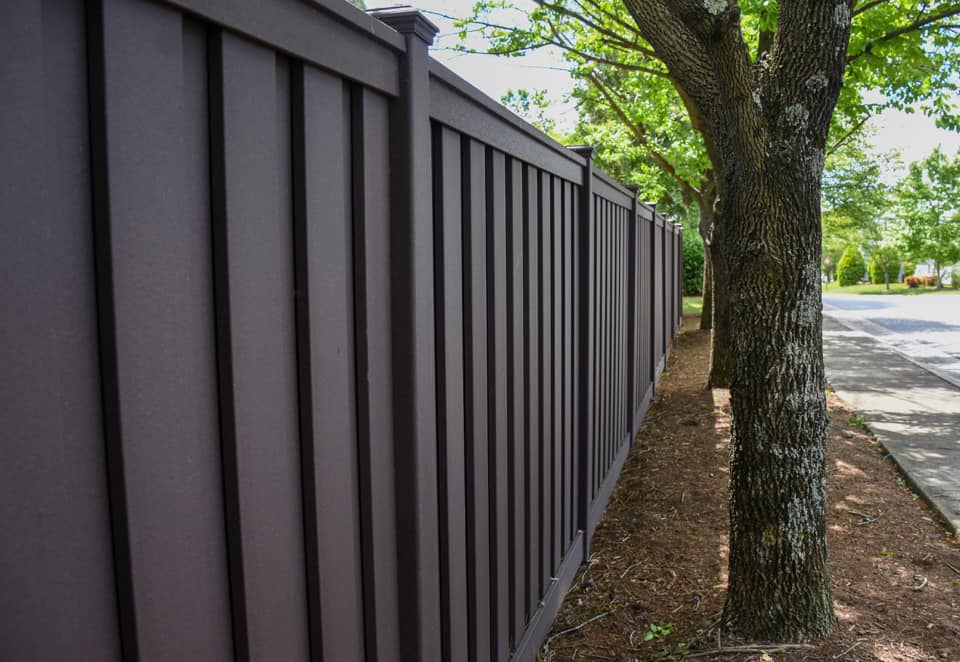No one wants to throw money down the drain. When you spend enough to call a purchase an investment, who could fault you for expecting that investment to last?
It’s no secret that installing a fence on your residential property is going to cost you more than your typical, everyday purchase. Have no doubt, residential fencing is an investment, and here at Hurricane Fence, we want to ensure that you have all the information you need to make an informed decision on that investment, allowing you to choose a durable fence that will stand the test of time, the elements, and more.
No matter what challenges you and your property face, there is a durable fencing solution ready to overcome them. In this post, we’ll dive into everything from durable fencing material, features for enhanced durability, maintenance and repair best practices, and even a cost/benefit analysis to help you decide what’s best for you.
If you’re looking for a durable fencing solution in the greater Richmond or Norfolk, Virginia areas, contact the friendly team at Hurricane Fence today. With an office in the heart of Richmond and Portsmouth, we can help create a custom solution fit for your property.
Richmond area customers can call 804-353-6030, and for those in Portsmouth, Virginia Beach, Chesapeake, Newport News, Norfolk, and other surrounding areas can call 757-853-5669 to speak with one of our dedicated fencing professionals. Alternatively, send us a message online and a member of our team will reach out to you promptly.
Let’s dive into the ins & outs of fence durability.
Contents
- 1 Table of Contents
- 2 Durable Fencing Materials
- 3 Common Threats to Fence Durability
- 4 IV. Factors of Durable Fencing
- 5 V. Enhancing Fence Durability Through Proper Installation
- 6 VI. Maintenance Practices for Extending the Lifespan of Your Fence
- 7 VII. Repairing Durable Fences
- 8 VIII. Cost-Benefit Analysis of Durable Fencing
- 9 Is Durable Fencing Right for You?
Table of Contents
Durable Fencing Materials
Every fence material comes with its own set of pros & cons, areas in which they excel as well as areas where they fall behind. Your fencing material should be chosen in conjunction with the purpose you intend your fence to fulfill, the local conditions of your property (weather, environment, etc.), as well as several other factors.
Generally speaking, however, there is a relatively conclusive hierarchy of fence durability based on material alone. So let’s go down the list of the most common fence materials and put them in order, starting with the least durable.
#5. Chain Link Fencing
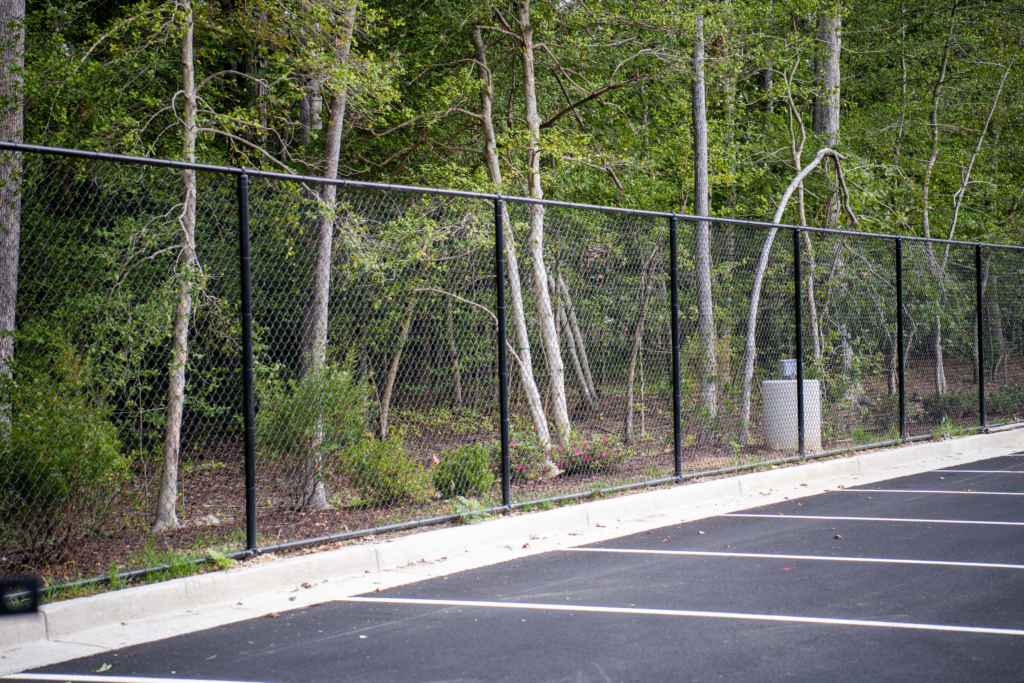
Chain link fencing is often considered the least durable option among common fencing materials. While it's relatively inexpensive and easy to install, it has several durability concerns. The galvanized steel wire can rust over time, especially in humid or coastal areas. Chain link fences are also prone to sagging and bending, particularly when subjected to strong winds or impact from falling branches.
Additionally, the vinyl coating on some chain link fences can deteriorate under prolonged UV exposure, leading to a less attractive appearance and reduced protection against the elements.
However, with proper maintenance, such as regular rust treatment and prompt repair of any damages, a chain link fence can still provide adequate service for 15 years or more, assuming no physical damage.
#4. Wood Fencing
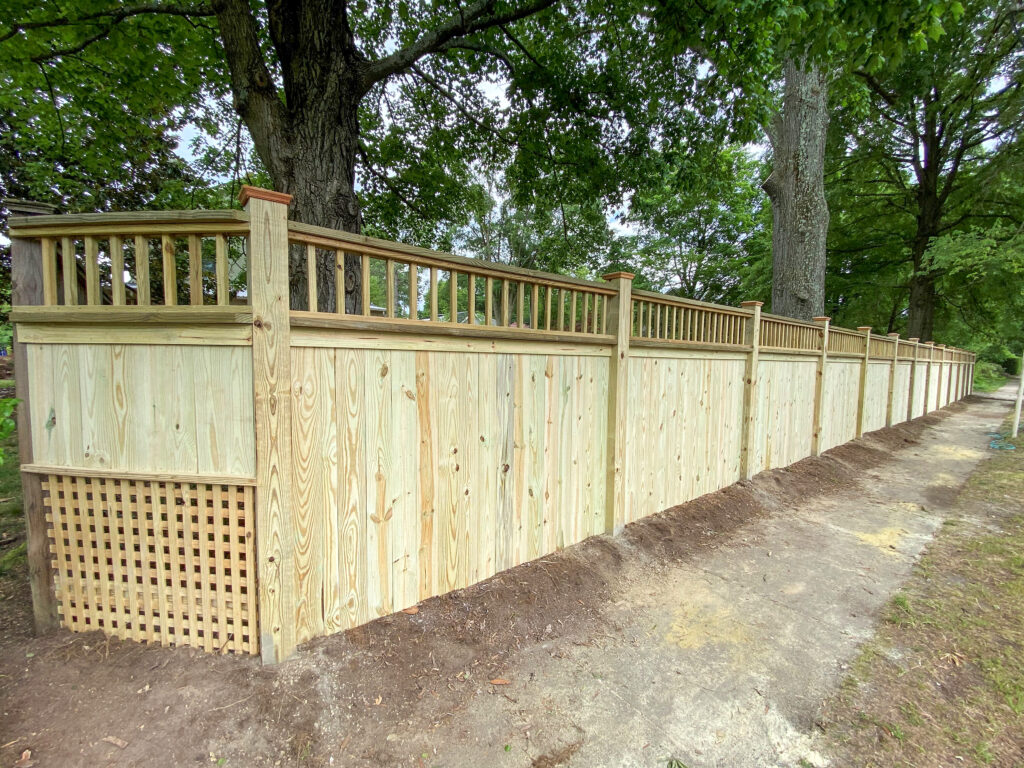
Wood fencing, while classic and aesthetically pleasing, faces significant durability challenges. It's susceptible to rot, especially in damp climates, and can fall victim to insect infestation, particularly termites. Wooden fences also tend to warp, crack, or splinter over time due to exposure to the elements. UV rays can cause fading and degradation of the wood fibers.
However, the durability of a wood fence can be significantly improved with regular maintenance. This includes applying water sealant every few years, staining or painting, and promptly replacing any damaged boards. Pressure-treated wood offers better resistance to rot and insects, enhancing overall durability.
With proper care, a wood fence can last 10-20 years, making it more durable than chain link but less so than other options.
#3. Vinyl Fencing
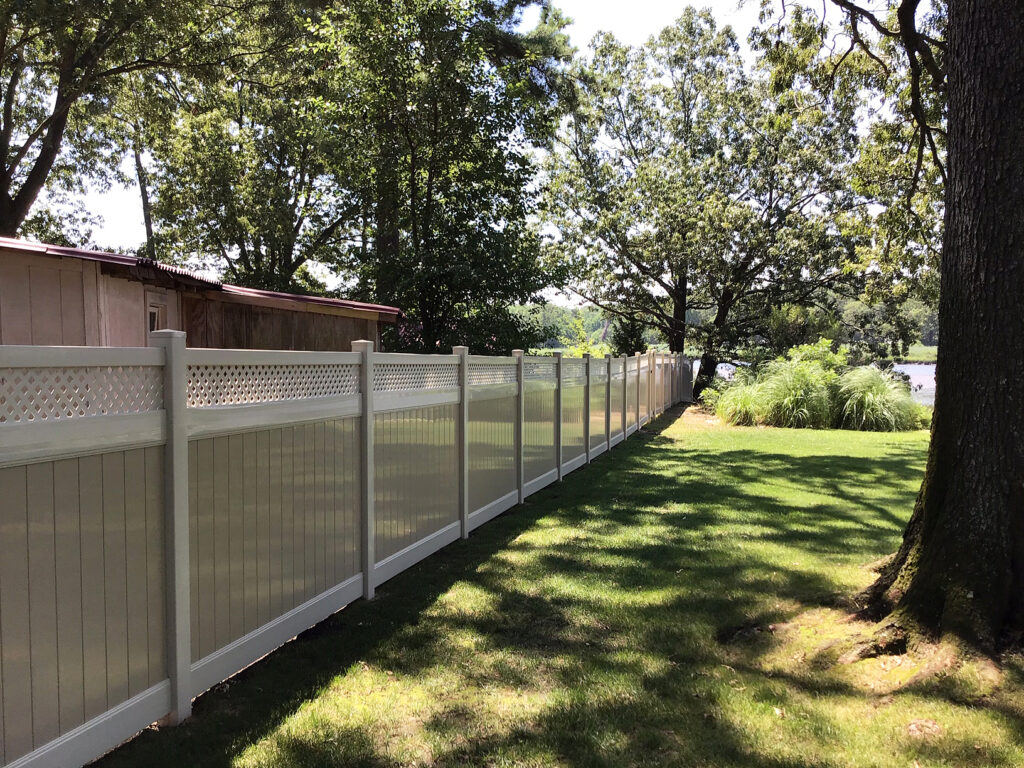
Vinyl fencing represents a step up in durability from wood and chain link. It's resistant to many of the issues that plague other materials - it doesn't rot, rust, or succumb to insect damage. Vinyl is also highly weather-resistant, maintaining its appearance and structural integrity in the face of rain, snow, and intense sunlight. It's flexible enough to withstand strong winds without breaking.
However, vinyl can become brittle in extremely cold temperatures, leading to cracking or chipping upon impact. It's also susceptible to mold growth in shady, damp areas if not cleaned regularly.
Despite these minor issues, vinyl fences are relatively low-maintenance and can last 15-20 years or more, making them a durable choice for many homeowners.
#2. Composite Fencing
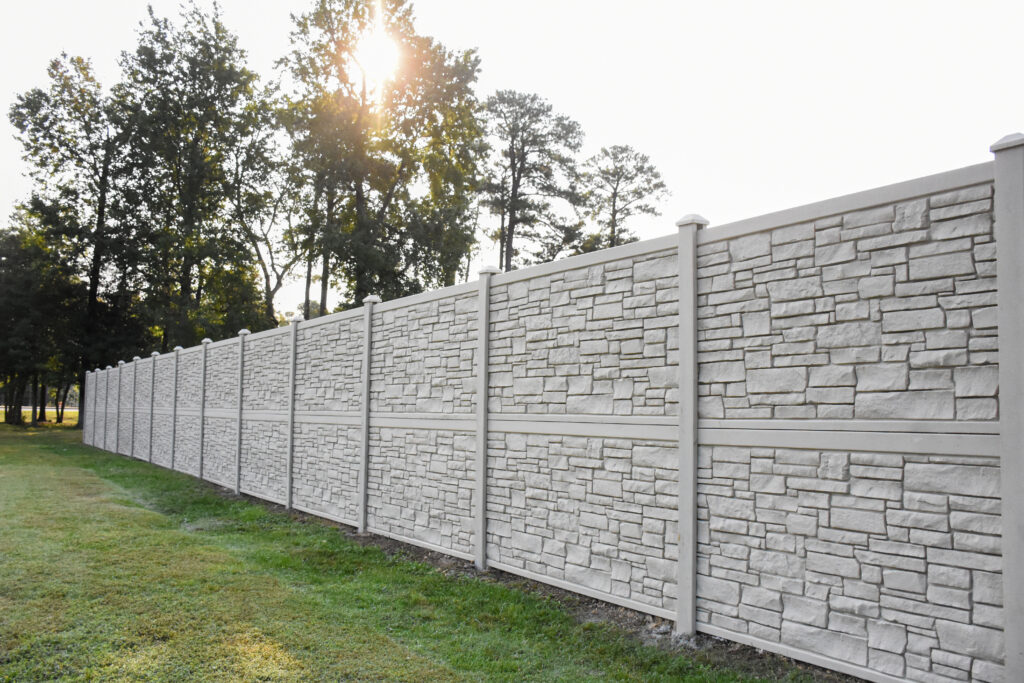
Composite fencing offers excellent durability, combining the best qualities of wood and plastic. Made from a mixture of wood fibers and recycled plastic, composite fences resist many of the problems associated with pure wood fences. They don't rot, splinter, or warp, and they're highly resistant to insect infestation. Composite fences also stand up well to various weather conditions, resisting fading from UV exposure better than vinyl.
They require minimal maintenance - usually just an occasional cleaning - to keep them looking great for years. While they can be more expensive initially, their longevity (often 20+ years) and low maintenance requirements make them a cost-effective, durable choice in the long run.
The main durability concern for composite fencing is potential mold growth in very damp conditions, but this can be mitigated with proper cleaning.
#1. Aluminum Fencing
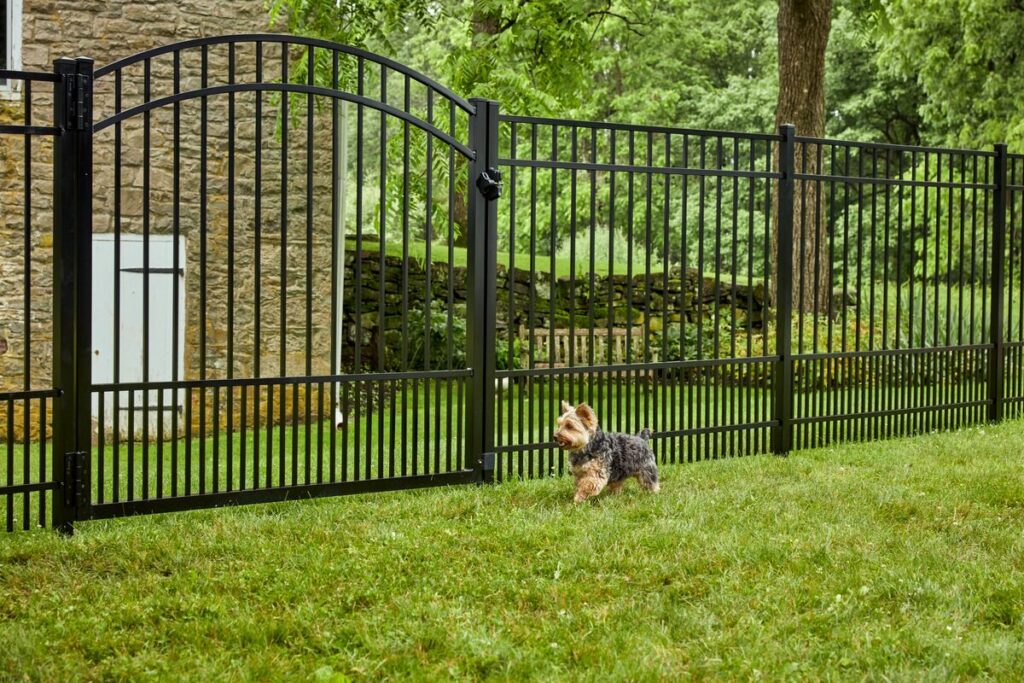
Aluminum fencing tops our list as the most durable fencing option. It offers an unmatched combination of strength and weather resistance that allows it to maintain its structural integrity and appearance for decades with minimal maintenance. Unlike iron, aluminum doesn't rust, making it an excellent choice for any climate, including coastal areas with high salt content in the air. It's also resistant to rot, insect damage, and warping.
Aluminum fences can withstand high winds and impact from falling branches without bending or breaking. The powder-coated finish on most aluminum fences provides additional protection against scratches and fading, ensuring the fence maintains its aesthetic appeal for years.
While the initial cost may be higher than some other options, an aluminum fence can last 20 - 30 years or more with proper care, making it an extremely durable and cost-effective choice in the long term. The primary maintenance required is occasional cleaning to keep it looking its best.
Common Threats to Fence Durability
No matter how durable your fencing material is, various external factors can challenge its longevity. Understanding these threats can help you make informed decisions about your fencing and take proactive steps to maintain its durability.
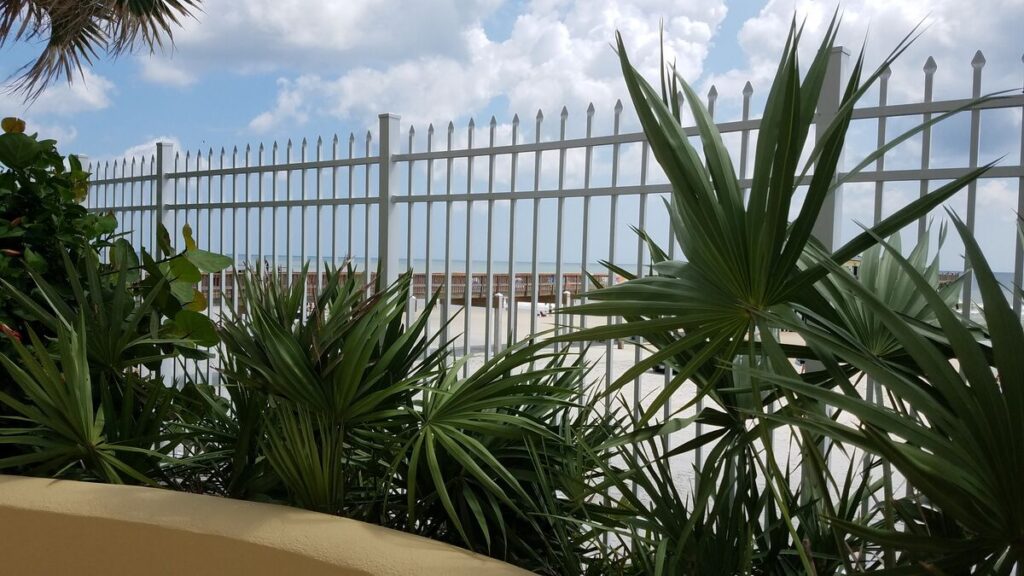
- Storm Damage (Fallen Tree Branches, High Winds)
Virginia's diverse weather patterns, from summer thunderstorms to winter nor'easters, create significant risks for fence durability. Our region frequently experiences high winds that can cause fences to lean or topple, particularly during hurricane season when gusts can exceed 60 mph. Fallen tree branches during storms are a common occurrence in Virginia's heavily wooded areas, potentially causing breaks or bends in fencing material. While durable options like aluminum or vinyl generally withstand these local weather challenges better than wood, proper installation is crucial for any material to handle Virginia's storm seasons.
- Moisture And Humidity Issues
Virginia's humid subtropical climate, characterized by hot, humid summers and relatively mild winters with frequent precipitation, creates unique challenges for fence durability. Our state's average annual rainfall of 43 inches, combined with high humidity levels, can be particularly damaging to wooden fences, leading to warping, rotting, or mold growth. Even metal fences aren't immune in our climate – Virginia's high humidity levels can accelerate rust formation in chain link fencing, especially in areas closer to the coast. For our region, moisture-resistant materials or protective coatings aren't just optional – they're essential for long-term fence durability.
- UV Radiation And Sun Exposure
Virginia's long summer days, with average highs in the upper 80s and intense sun exposure, can significantly impact fence materials over time. Wood fencing, common in our historic neighborhoods, can fade and dry out quickly in the summer heat, becoming brittle and more prone to cracking. Some vinyl fencing may become discolored or brittle under our intense summer sun exposure. When considering fence durability for Virginia properties, it's crucial to select materials with proven UV resistance, such as treated wood, high-quality vinyl, or powder-coated aluminum that can withstand our seasonal temperature extremes.
Environmental Factors
- Soil Conditions And Ground Movement
Virginia's freeze-thaw cycles pose a real and significant challenge to fence durability. Our winter temperatures frequently fluctuate above and below freezing, causing the soil to expand and contract repeatedly. This cycle can literally push fence posts out of the ground over time – a process called frost heaving that's particularly common in our region's clay-rich soils. Additionally, Virginia's soil composition varies significantly across regions, from coastal sandy soils to inland clay, each presenting unique challenges. To combat these local conditions, fence posts should be installed below the frost line (typically 18-24 inches in Virginia) with proper concrete footings.
- Vegetation Growth And Root Systems
Virginia's fertile soil and humid climate create perfect conditions for robust plant growth, which can pose significant threats to fence durability. Our state's abundant rainfall and long growing season mean that climbing vines, like Virginia Creeper and English Ivy, can quickly overtake fencing if not managed. These native species can work their way into small cracks or between boards, gradually widening them. More critically, our region's large deciduous trees, with their extensive root systems, can cause significant ground displacement, potentially destabilizing fence posts. Regular maintenance, including trimming back our vigorous local vegetation and monitoring for root interference, is essential for preserving fence durability in Virginia's growing conditions.
Human And Animal-Related Damage
Fences often bear the brunt of daily life activities. Children's play, pets jumping or digging, and accidental impacts from lawn care equipment can all test a fence's durability. More deliberate human actions like leaning objects against the fence or using it as a makeshift clothesline can also cause damage over time.
Moreover, wild animals might scratch, chew, or attempt to burrow under your fence. Here in Virginia, your most likely to run into problems with squirrels, groundhogs, foxes, opossums, and occasionally, deer. Choosing a durable fencing material that can withstand these everyday stresses is crucial. For instance, vinyl and aluminum fences tend to be more resistant to scratches and dents compared to wood or chain link.
Understanding these common threats to fence durability can help you select the right fencing material for your specific needs and environment. It also underscores the importance of regular maintenance in preserving your fence's longevity, regardless of the material you choose. By anticipating these challenges, you can take proactive steps to ensure your fence remains durable and functional for years to come.
IV. Factors of Durable Fencing
When it comes to durable fencing, certain materials stand out for their ability to withstand various challenges. Let's explore the key durability features that make these materials top performers in the fencing industry.
Impact Resistance
Impact resistance is a crucial factor in fence durability, especially in areas prone to severe weather or high activity.
Aluminum fencing excels in this category, offering superior impact resistance without the weight of traditional wrought iron. Its strength-to-weight ratio allows it to absorb impacts without bending or breaking, making it one of the most durable fencing options available.
Vinyl fencing, while not as strong as aluminum, offers good impact resistance due to its flexibility. High-quality vinyl fences can bend under impact and return to their original shape, a feature that significantly contributes to their durability.
Composite fencing also performs well in terms of impact resistance. The combination of wood fibers and plastic creates a material that's stronger than wood alone and can withstand considerable impact without damage.
Rust And Corrosion Resistance
Rust and corrosion can significantly shorten a fence's lifespan, making resistance to these processes a key feature of durable fencing materials.
Aluminum stands out again in this category. Unlike iron or steel, aluminum naturally forms a protective oxide layer when exposed to air, making it highly resistant to rust and corrosion. This feature contributes greatly to aluminum's reputation as one of the most durable fencing materials, especially in coastal or humid areas.
Vinyl and composite materials are inherently rust-proof, as they contain no metal components. This resistance to rust and corrosion is a major factor in their long-term durability, particularly in challenging environments.
Rot and Insect Resistance
Rot and insect damage are primary concerns for wooden fences, but several durable fencing materials offer excellent resistance to these issues.
Vinyl and aluminum fences are completely impervious to rot and insect damage, contributing significantly to their durability. These materials can maintain their integrity for decades without succumbing to the decay that often affects wooden fences.
Composite fencing also performs well in this category. The plastic component of composite materials protects against moisture infiltration and insect infestation, making it much more resistant to rot and insects compared to traditional wood.
While not immune, pressure-treated wood offers improved resistance to rot and insects compared to untreated wood. The treatment process infuses the wood with protective chemicals, enhancing its durability against these common threats.
Flexibility And Ability To Withstand Pressure
The ability of a fence to flex under pressure without breaking is an important aspect of its overall durability, particularly in areas with high winds or ground movement.
Vinyl fencing shines in this category. Its inherent flexibility allows it to bend under pressure from wind or impact and return to its original shape. This characteristic significantly enhances its durability in challenging conditions.
Aluminum, while not as flexible as vinyl, has its own advantages. Its strength allows it to withstand significant pressure without bending permanently. In cases of extreme force, aluminum is more likely to bend than break outright, often allowing for repairs rather than full replacement.
Composite fencing offers a middle ground, providing some flexibility while maintaining strength. This balance contributes to its durability, allowing it to withstand pressure without the rigidity that can lead to breakage in some materials.
In conclusion, these durability features - impact resistance, rust and corrosion resistance, rot and insect resistance, and flexibility - are key factors that set top-performing fence materials apart. Materials like aluminum, vinyl, and composite consistently rank high in these categories, explaining their reputation for durability. When choosing a durable fencing solution, consider how these features align with your specific needs and environmental conditions to ensure you select the most appropriate and long-lasting option for your property.
V. Enhancing Fence Durability Through Proper Installation

While the choice of material plays a crucial role in fence durability, even the most durable fencing can fail prematurely if not installed correctly. Proper installation is key to maximizing the lifespan and performance of your fence.
The Importance of Professional Installation
Professional installation is a critical factor in ensuring the longevity and durability of your fence. Here’s why:
- Expertise & Experience: Professional fence installers have the knowledge and skills to handle various materials and overcome site-specific challenges. Their experience allows them to anticipate and address potential issues that could affect fence durability
- Proper Tools & Equipment: Professionals have access to specialized tools and equipment that ensure precise installation, enhancing the overall durability of your fence.
- Understanding of Local Conditions: Professional installers are familiar with local soil conditions, climate, and building codes or regulations. This knowledge is crucial for installing a fence that will remain durable in your specific environment.
- Warranty Considerations: Many manufacturers’ warranties are only valid if the fence is professionally installed. Opting for professional installation can protect your investment in durable fencing materials.
VI. Maintenance Practices for Extending the Lifespan of Your Fence
Even the most durable fencing materials require proper maintenance to reach their full potential lifespan. Regular care and attention can significantly extend your fence’s durability and keep it looking and performing great for years to come.
Regular Inspections & Cleaning
- Inspection Routine: Establish a regular inspection schedule, ideally twice a year (spring & fall). Look for signs of damage, wear, or potential issues such as:
- Loose or missing hardware
- Warped, cracked, or splintered boards
- Leaning posts or sections
- Signs of pest infestation or rot
- Rust or corrosion on metal components
- Cleaning Practices: Regular cleaning not only keeps your fence looking good but also prevents the buildup of substances that can degrade your fence over time. Here’s some tips:
- Use a garden hose of pressure washer (on low settings) to remove dirt and debris
- For tough stains, use a mild detergent of soapy water and a soft brush to scrub them out
- Always rinse thoroughly after cleaning to prevent soap residue from forming and attracting dirt
- Surrounding Vegetation:
- Trim bushes, vines, and tree branches away from the fence to prevent moisture retention and physical damage.
- Remove any climbing plants that may be growing on your fence. These can trap moisture and lead to decay over time.
Material-Specific Maintenance Tips
- Chain Link Fencing
- Check for any bent or broken links and repair promptly
- Inspect for signs of rust and address immediately to prevent spreading
- Lubricate gate hinges and latches regularly to ensure smooth operation
- Wood Fencing
- Regularly check for and replace any rotting boards promptly
- Sand down any rough or splintered areas
- According to Five Star Painting, you should reapply stain or paint every 2-3 year, or as needed
- Address any sign of pest or rot issue immediately. Check out this post from Plunkett’s Pest Control to learn the signs of pest damage.
- Vinyl Fencing
- Inspect for any cracks or breaks and replace damaged sections
- Clean with mild soap and water to prevent staining
- Avoid using abrasive cleaners that could scratch the surface
- Composite Fencing
- Clean to prevent mold or mildew growth
- Check for any loose boards or fasteners and tighten as needed
- Address any scratches or gouges promptly to prevent moisture intrusion
- Aluminum Fencing
- Check for any bent or damaged pickets and repair/replace as needed
- Inspect the powder coating for any chips or scratches
- Clean with mild soap and water to maintain appearance
Protective Treatments & Coatings
Applying protective treatments and coatings can significantly enhance fence durability across various materials:
- Chain Link Fencing
- Rust inhibiting primers: apply to any areas where rust is starting to form.
- Galvanizing spray: can be used on chain link fences to restore the protective zinc coating.
- Wood Fencing
- Sealants: Apply a water-repellent sealant every 1-2 years to protect against moisture damage. Check out this post from the Backyard Brothers for more details and suggestions.
- Stains: Use a high-quality exterior stain to protect against UV damage and enhance the wood’s natural beauty. View this post from Fence Armor for more info on stains.
- Paints: A good exterior paint can provide excellent protection against the elements.
- Vinyl & Composite Fencing
- UV Protectants: while these materials are generally low-maintenance, applying a UV protectant can help prevent fading and degradation from sun exposure, says Frame It All in their post on the subject (check your warranty first!).
- Aluminum Fencing
- Touch-Up Paint: Although not necessarily a point on fence durability, if scratches or other miner damages do occur, you can use manufacturer-recommended touch up paint to address these issues.
- Clear Coat: Some homeowners choose to apply a clear coat for additional protection, though this is generally not necessary for high-quality aluminum fences (like ours are from ActiveYards).
Remember, while these maintenance practices can significantly extend the lifespan of your fence, it’s important to always follow manufacturer guidelines for your specific fencing material. Some treatments or cleaning methods that work well for one material from one manufacturer might be harmful to another.
By implementing these maintenance practices, you’re not just maintaining your fence - you’re actively enhancing its durability. Regular care prevents small issues from becoming major problems, ensures your fence continues to function as intended, and keeps it looking great for years to come. A well-maintained fence made from durable fence materials can be a long-lasting asset to your property, providing security, privacy, and aesthetic value for decades.
VII. Repairing Durable Fences
Addressing Storm Damage
Straightening Bent Posts
- Metal Posts:
- Use a fence post straightener or a come-along winch to gradually pull the post back into it’s proper position.
- If severely bent, it may be necessary to replace the post entirely.
- For more information, view this post from Shop Floor Talk.
- Wooden Posts:
- Dig around the base of the post and use a lever to slowly straighten it.
- Add gravel or concrete to reinforce the post’s position once straightened.
- For more comprehensive information on straightening bent wooden posts, check out this blog post from HGTV.
- GENERAL NOTE: Always check the stability of adjacent sections when straightening posts of any material type.
Replacing Broken Panels or Pickets
- Wooden Fences:
- Remove damaged boards by prying them off or unscrewing fasteners.
- Cut replacement boards to size and secure them using galvanized nails or screws.
- Stain or paint the new boards to match the existing fence.
- Vinyl Fences:
- Most vinyl fences are designed with replaceable panels or pickets.
- Follow manufacturer guidelines for removing damaged sections and inserting replacements.
- Aluminum Fences:
- Remove damaged pickets by unscrewing or unbolting them from the rails.
- Install new pickets, ensuring they’re securely fastened and aligned with existing ones.
For additional information, The Home Depot, The Handyman’s Daughter, and Empire Fence all have great resources on fence panel and picket repair.
Fixing Rust & Corrosion Issues
- Identify the extent of rust damage: Minor surface rust can often be addressed, but extensive structural rust may require replacement of the affected components.
- For surface rust:
- Use a wire brush or sandpaper to remove loose rust.
- Apply a rust converter product to neutralize remaining rust.
- Prime the area with a rust-inhibiting primer
- Paint with a color-matched, weather-resistant paint.
- For Severe Rust:
- Cut out heavily rusted sections if possible.
- Replace with new components. Welding may be required.
- Treat the repaired area as you would surface rust to prevent furture issues.
- Consider applying a rust-inhibiting coating to the entire fence to prevent the onset of rust and corrosion.
For further resources on fence rust and corrosion correction, check out the following posts from Milwaukee Fence Finders and Orange Fence & Supply.
Dealing With Rotting Wood
- Assess the extent of the rot: Minor soft spots can often be repaired with ease, but similarly to rust, extensive rot may require the replacement of entire boards or posts. Learn to spot rot with this post from All Counties Fence & Supply.
- For Minor Rot:
- Use a wood hardener product on soft areas to reinforce the wood fibers.
- Once dry, fill any holes or depressions with wood filler.
- Sand the area smooth once the filler has cured.
- Prime and Paint or stain to match the rest of the fence.
- For Extensive Rot:
- Cut out the rotted section, ensuring you remove all affected wood.
- Replace with new, pressure-treated wood, making sure to keep the same dimensions.
- Secure the new wood using galvanized nails or screws.
- Treat the new wood with a water-repellent preservative before painting or staining.
- To Prevent Future Rot: Ensure proper drainage around fence posts and consider using post caps to keep water from seeping into the end grain.
Patching & Sealing Techniques
- Wooden Fences:
- Use exterior-grade wood filler for small holes and cracks.
- For larger gaps, consider using epoxy wood filler for a more duable repair.
- Once repairs are made, apply a high-quality exterior wood sealer to protect against moisture.
- Vinyl Fences:
- Small holes or cracks can often be repaired using a vinyl patching kit.
- For larger damages, it’s usually best to replace the entire panel or picket.
- After repairs, clean the fence thoroughly and consider applying a UV-protectant spray.
- Aluminum Fences:
- Use a two-part epoxy filler designed for metal or aluminum
- After patching, sand smooth, prime, and paint to match the existing fence.
Remember, while these repair techniques can address many common issues, some damages may be beyond DIY repair. In cases of sever structural damage or when dealing with specialized materials like composite, it’s often best to consult with or hire a professional fence contractor. We have the tools, expertise, and access to materials needed to ensure your fence repairs are done correctly, maintaining the durability and integrity of your fence.
If you are looking for a fence repair, feel free to reach out to us here at Hurricane Fence. We can help you decide which route is best for your specific situation. Give us a call in Richmond at 804-353-6030, the Tidewater, VA area at 757-853-5669, or send us a request online.
By promptly addressing damages and using proper repair techniques, you can significantly extend the lifespan of your fence, ensuring it continues to provide security, privacy, and aesthetic value to your property for years to come.
VIII. Cost-Benefit Analysis of Durable Fencing
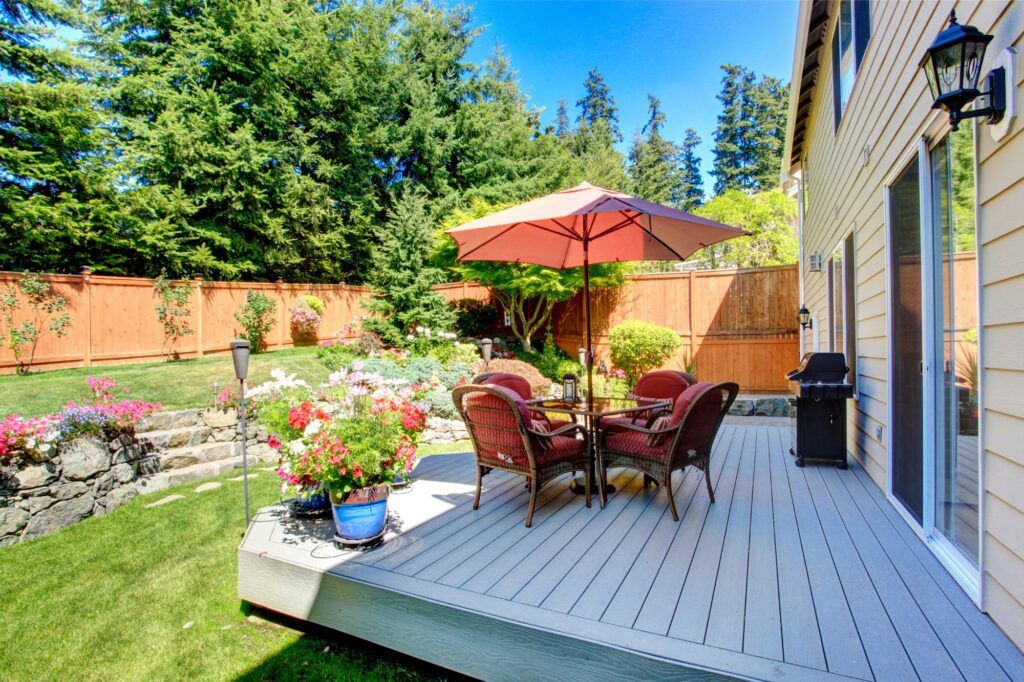
When considering fencing options, it’s crucial to look beyond the initial price tag. Durable fencing often represents a higher upfront cost but can offer significant long-term benefits. Let’s break down the cost-benefit analysis of investing in durable fencing.
Initial Investment Vs. Long-Term Savings
- Upfront Costs
- Durable materials like aluminum, vinyl, and high-quality composites typically have higher initial costs compared to options like chain link or wood
- Professional installation, while more expensive than DIY initially, ensures proper setup for maximum durability potential
- Long-Term Savings
- Durable Fences last longer, reducing or eliminating replacement costs over time.
- Example: A wood fence might need replacement every 10-15 years, while an aluminum fence can last up to 3 times as long.
- Calculate The Lifetime Cost: (Initial Cost + Maintenance Costs) / Expected Lifespan in Years
Reduced Maintenance & Repair Costs
- Maintenance Frequency:
- Less durable options often require maintenance every few months.
- Durable fence materials like vinyl or aluminum may only need occasional cleaning.
- Maintenance Costs:
- Wood fences might require regular staining, sealing, and board replacements.
- Durable options like aluminum or vinyl have minimal ongoing costs.
- Repair Frequency and Costs:
- Less durable fences are more prone to damage from weather, impacts, or decay.
- Durable fencing materials resist common damages, reducing repair frequency and costs.
- Time Value:
- Consider the time spent on maintenance as part of the overall cost.
- Durable fencing frees up time for other activities or home improvements.
Impact On Property Value
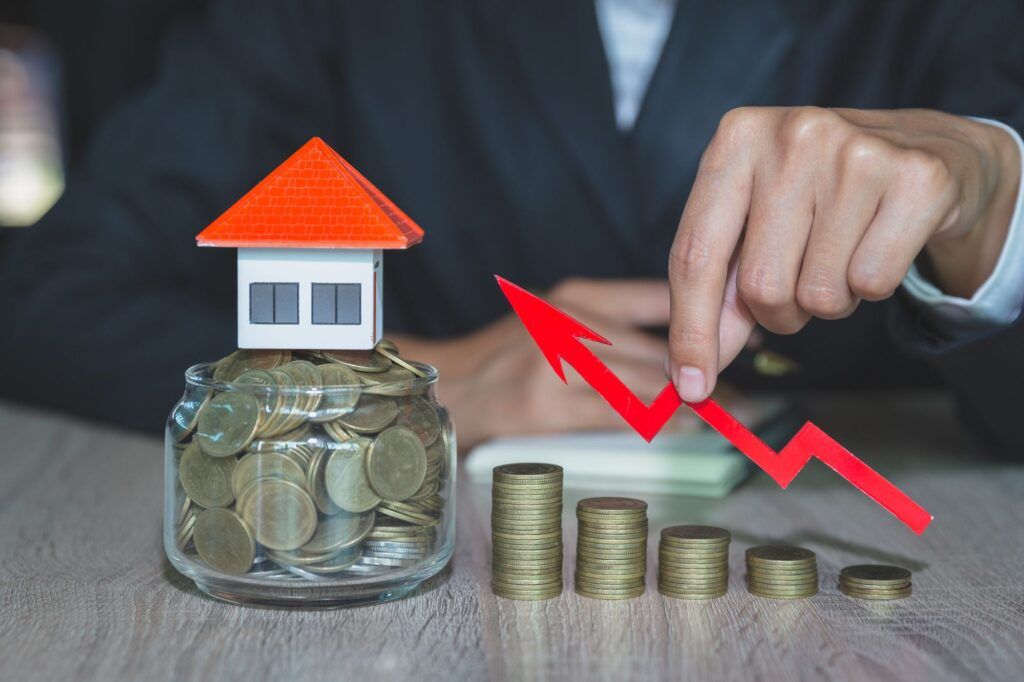
- Curb Appeal:
- High quality, durable fencing enhances a property’s aesthetic appeal.
- Well-maintained fencing creates a positive first impression for potential buyers.
- Return on Investment (ROI):
- According to realtor.com, a well-maintained fence can recoup 50-70% of its cost upon home sale.
- Durable fencing materials often have higher ROI due to their longevity, low maintenance requirements, and overall aesthetic appeal.
- Market Appeal:
- Properties with durable, low-maintenance fencing are more attractive to potential buyers.
- In some markets, specific fencing types can significantly boost property value. (Privacy fences in suburban areas, livestock fencing for rural properties, etc.)
- Insurance Considerations:
- Insurance companies take into account the quality and durability of your fencing. This can lead to long-term savings on your premiums.
- Neighborhood Consistency & HOAs:
- Durable fencing that aligns with neighborhood or HOA standards can positively impact not just your property value, but potentially the entire area’s overall desirability.
- Functionality Value:
- Durable fencing that effectively provides privacy, security, or defines property lines adds functional value to a home.
Cost-Benefit Analysis Example
Let’s compare a standard wood fence to a premium aluminum fence over a 30-year period:
| Wood Fence: Initial Cost: $3,500Lifespan: 15 years (1 replacement in 30 years)Annual Maintenance: $200 Total 30-Year Cost: ($3,500 x 2) + ($200 x 30) = $13,000 | Aluminum Fence: Initial Cost: $5,500Lifespan: 30+ years (no replacement needed)Annual Maintenance: $50 Total 30-Year Cost: $5,500 + ($50 x 30) = $7,000 |
In this example, despite the higher initial cost, the durable aluminum fencing saves $6,000 over 30 years, not including time savings or increased property value.
For more information to help you complete your cost-benefit analysis, check out this helpful resource for Deck Expressions.
While durable fencing options often come with a higher upfront cost, they frequently prove to be more economical in the long run. Reduced maintenance needs, longer lifespans, and positive impacts on property value can make durable fencing a wise investment for homeowners. When considering fencing options, it’s essential to look beyond the initial price tag and consider the total cost of ownership over the fence’s lifetime. For many homeowners, the peace of mind, reduced long-term costs, and added value to their property make durable fencing a sound financial decision, and worthwhile investment.
Is Durable Fencing Right for You?
As we’ve explored throughout this comprehensive guide, the durability of your fence is not just a matter of aesthetics or initial cost– it’s an investment in the long-term value, security, and appeal of your property. To recap, these are the key points that underscore the importance of choosing a durable fence:
- Longevity
- Weather Resistance
- Maintenance Requirements
- Cost-Effectiveness
- Increased Property Value
- Peace of Mind
- Environmental Considerations
As you consider your fencing options, we strongly encourage you to view your fence as a long-term investment in your property. Here’s why investing in quality materials and professional installation is crucial:
- Quality Materials:
- Opt for high-grade, durable fencing materials that align with your specific needs and local climate conditions
- Remember, the most durable option is always the most expensive– consider factors like maintenance requirements and lifespan when comparing costs.
- Quality materials not only last longer but often look better throughout their lifespan, maintaining your property’s aesthetic appeal.
- Professional Installation:
- Even the most durable materials can fail prematurely if not installed correctly.
- Professional installers bring expertise in proper techniques, local regulations and building codes, and optimal material usage
- Proper installation enhances your fence’s durability, ensuring it stands straight, resists ground movement, and withstands environmental stresses.
- Many manufacturers' warranties are only valid with professional installation, providing an additional layer of protection for your investment.
- Long-Term Vision:
- Think beyond the immediate future. A fence that looks great and functions well for decades is often worth the extra upfront investment.
- Consider how your needs might change over time and choose a durable fencing solution that can adapt or endure through these changes.
- Customization and Expertise:
- Professional fence installers can offer insights into customizing your fence for maximum durability (and aesthetic appeal) in your specific environment.
- They can recommend the best materials and designs to meet your needs for privacy, security, and aesthetics while ensuring durability.
To wrap things up, the decision to invest in a durable fence is one that pays dividends for years to come. By choosing quality materials and entrusting the installation to professionals like us here at Hurricane Fence, you’re not just building a fence– your enhancing your property’s value, ensuring long-term satisfaction, and potentially saving significant time and money over the life of your fence.
If you’re ready to invest in your property’s future with durable fencing, contact the team here at Hurricane Fence. Richmond area customers can call 804-353-6030, Tidewater area customers can use 757-853-5669, or simply send us a request online and one of our fencing professionals will reach out to you as soon as possible.
